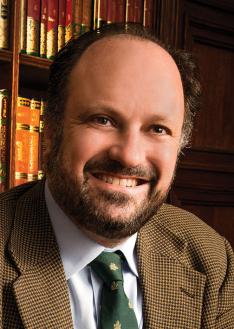A recent debate has raged in policy and academic circles about whether it is appropriate to use the adjective “Islamic” when referring to the Islamic State and other militant jihadist groups like al-Qaida. This polemic is centered on President Barack Obama’s unwillingness to use the word “Islam” in any form when discussing these groups. He does not want to dignify them, or their claims, by an association with the religion of Islam and the great civilization it fostered. Instead, the term of art for jihadists in Washington is “violent extremists,” and the policy against groups like the Islamic State is called “countering violent extremism” or by its acronym, “CVE.” While this label is inelegant, the White House has made a legitimate policy determination on how to contend with the jihadist phenomenon. It does not wish to offend Muslims, and even hopes to galvanize them to join the policy of CVE. After all, the overwhelming majority of Muslims do not agree with the Islamic State’s ideology and view its ideologues and fighters as misguided and perverting both the message and image of the faith.
As a scholar of Islam, my role — unlike that of the policy-driven politician — is to study groups like the Islamic State, to trace their claims historically, and to explain their ideology and rise. To do so, it is important to see in what ways the Islamic State is tied to the history of Islamic theology and law, how it cites texts of revelation, and how it selectively appropriates and refashions the tradition of Islam for its political purposes. In addition, it is just as important to study the political, economic, and social context in which this jihadist group emerged. In other words, to ignore the Islamic background and content of the Islamic State’s ideology or the material factors that led to its rise is to fail in the scholarly enterprise and to fall short at providing the policymaker, the student, and the public with an adequate understanding of the global phenomenon of jihadism.
So who are the jihadists of the Islamic State, what do they believe in, how and why did they emerge, and what is it they want to achieve?
The Islamic State is a Jihadi-Salafi movement, which means that its members adhere to a strict literalist interpretation of the texts of the Quran and the sayings of the Prophet Muhammad. They also privilege armed struggle (jihad) as a means for implementing their austere, intolerant, and muscular vision of Islam. Salafis — not all of whom preach armed violence; only the Jihadi-Salafists do — have been a minority group, albeit an influential one, throughout the history of Islam. However, their ideology and worldview have come to the fore in modern times for a variety of reasons. Some of these have to do with the decline in stature of traditional institutions of religious authority, the spread of mass literacy, the emergence of an urban middle class, and the funding of religious education by Salafi-oriented petro-states like Saudi Arabia. Salafis principally target other Muslims for not following their version of Islam, and accuse their enemies of corrupting the faith with beliefs and practices that violate the doctrine of the oneness of God by associating other beings or things with Him. Muslims, Salafis argue, have become weak because they have deviated into error and lost the “true” message of the faith. Their grievance is about theological issues and the need for reform, but this quickly acquires a political and militant dimension with the jihadists who are frustrated with the inability to effect change through nonviolent means.
An important activist doctrine of the Jihadi-Salafists is to show loyalty toward fellow brethren in the faith and to exhibit enmity and hatred toward the unbelievers. One consequence of this is that Shia and Sufis — Muslims whose respective understanding of Islam differs significantly from that of the Salafis — tend to be vilified by Jihadi-Salafists, and often suffer violence.
In the realm of politics, the Jihadi-Salafists condemn in categorical terms the modern world order because its values and principles are not rooted in Islam, but rather in the infidel West. According to them, the modern world has stripped God of his sovereignty as the sole lawgiver and weakened Muslims by dividing them into territorial states in which citizenship — not faith — is the basis for identity and allegiance. To make matters worse, they say, the rulers of these Muslim-majority countries have been co-opted into this system and ultimately serve the interests of the dominant West, and thus have become “apostates” who must be toppled.
The ultimate goal of the Jihadi-Salafists is to make Muslims powerful, as they were before the relatively recent domination of the globe by the West. To do this, it is not sufficient to educate Muslims about the tenets of the faith; one must engage in acts of violence, both individual and collective, against the enemies. Only by terrorizing the enemy, including through the use of suicide bombing and mass slaughter, enslavement and beheadings, can victory be attained. Re-creating the unitary imperial state of the early Islamic period — the caliphate — is deemed important because it can guide and channel the energies of the community as well as serve as an ideal around which Muslims can rally. This is one reason why the Islamic State declared itself a caliphate immediately after a series of remarkable military victories in Iraq in the summer of 2014.
The ideology described above is on display in numerous online treatises and books written by the ideologues of Jihadi-Salafism. There are learned tomes and sermons by scholars such as Turki al-Binali, a 30-year-old prodigy from Bahrain who defends and elaborates the Islamic State’s teachings with rhetorical eloquence and flair. But this ideology has become more effective and potent, especially at recruitment, because it is associated with what I label the culture of jihad. Unlike backers of al-Qaida, the Islamic State’s supporters are masterful at producing technically sophisticated videos that are then skillfully distributed through social-media applications such as Twitter, YouTube, and Facebook. And these are not just gory beheading clips — they include a cappella chants, poetic odes, and scenes of battles interspersed with images of medieval knights on horses, clashing swords, and violent video-game scenes. Particular favorites are clips from the movie Kingdom of Heaven as well as the video game “Assassin’s Creed: Revelations.” Joining the jihad has become cool and implies that one can live a reality that mirrors the virtuous past, which is a contemporary projection of the first centuries of Islam, a period of righteousness, heroism, and justice. This sentiment is evoked by the so-called female poet of the Islamic State, Ahlam al-Nasr, two of whose lines in praise of the caliphate are:
Islam has become a fortress again; Lofty, firm and great
The banner of God’s Oneness is raised anew; it does not bend or deviate
Thinking of the Islamic State in purely ideological terms offers only a partial explanation of the jihadist phenomenon in Iraq and Syria. To understand its emergence and appeal, one must look at the brutal political, economic, and social realities of the modern Arab world. Perhaps the most important factor in this regard is the U.S. invasion of Iraq in 2003. This assault on — and reconfiguration of — Iraq effectively disenfranchised the once-dominant Sunnis and imposed a political system in which the majority Shia Arab population became the new masters of the country. Under the leadership of Nouri al-Maliki, the Shia prime minister from 2006 until 2014, the Iraqi state pursued a sectarian agenda that marginalized and persecuted the Sunnis.
In response, the Sunnis became radicalized and turned to the ideology of Jihadi-Salafism, with its virulent anti-Shia stance, as the path for resisting the new political order. The Sunni transformation toward militant Islamism was gradual and was aided by the Arab Spring uprisings of 2011 that quickly sowed violence and chaos in neighboring Syria. The Syrian Sunnis — some 70 percent of the country’s population — also had been politically marginalized, and since 2011 were being brutalized by the Damascus government, which is identified as Shia. (The ruling Asad family, and most of its military and intelligence forces, belongs to a Shia sect called the Alawis or Nusayris.) The Islamic State represents the coming together of significant elements from the two Sunni communities of Iraq and Syria, with the immediate aim of toppling the regimes in Damascus and Baghdad and eventually in Riyadh, too.
Several other factors contribute to the appeal of the Islamic State and help draw recruits to its ranks from across the Arab world, the source of most of its soldiers. Virtually every Arab country is ruled by a corrupt regime that is unaccountable and practices coercion to obtain consent from the governed. And in all Arab countries the population is very young, often with 60 percent under the age of 30 — this is referred to as the youth bulge. Unemployment rates are high, and merit and competence rarely are rewarded. Obtaining work and advancement often is due to being connected to the right patronage network. The state tends to be the dominant employer and economic actor in society, and an inability to obtain a job in the public sector dooms one to a precarious existence. Without employment, finding a marriage partner becomes very difficult, which delays the possibility of starting a family.
These economic impediments to development, both personal and societal, adversely affect Arab populations that are now highly informed and networked through access to the Internet, social-media technologies, and satellite television. Arabs know and see for themselves that other people, in China or Europe for example, have it much better. For many people, this knowledge generates expectations but also considerable personal frustration — even hopelessness — that they might ever improve their lot in life under the existing political systems. The Islamic State offers a utopian alternative, and its propaganda trumpets a social order that is just and moral and in which corruption is severely dealt with. A number of videos, for example, display Islamic State soldiers and officials being crucified for crimes they have committed.
The phenomenon of the Islamic State is multifaceted, and its appeal is not straightforward. Its distinctive interpretation of Islam — the ideology of Jihadi-Salafism — cannot on its own explain its rise and relative success, but neither can the dire political and economic realities of the Arab world. It is only by adopting multiple perspectives combining the ideological and the material that one can begin to understand how and why the Islamic State has risen and what its trajectory might be. Its goals lie beyond Iraq and Syria, inasmuch as its ideologues boastfully claim that world conquest and the establishment of Islamic rule everywhere is their ultimate aim.
The Islamic State will certainly not endure, and we are now beginning to see it suffer military defeat at the hands of a coalition that includes the United States, Iraq, and Iran, among other nations. As it begins to lose battles and territory, its sheen will quickly fade. What will remain are the factors that have allowed militant politics to flourish in the first place, namely an ideology of religious power and domination, as well as political, social, and economic realities that provide a wellspring of recruits and supporters who feel deeply disenfranchised and increasingly marginal to the flow of history. Only by addressing seriously these underlying causes and grievances will the phenomenon of jihadism be effectively dealt with. No amount of “countering violent extremism” through the U.S. government’s messaging against the propaganda of the Islamic State will help make this violent feature of global politics become a thing of the past.



